Armenian Knights 1050-1350's
Now they have long been in graves,
And even the ant to drive off the face,
Went to the lions, they can not.
Hovhannes Tlkuranzi. Armenian medieval lyrics. L. O. publishing house "Soviet writer", 1972
Knights and chivalry of three centuries. In our "journey" through the "era of the Knights of the Chainmail" we have already passed a lot of countries and finally, leaving Europe, found themselves in the mountains of the Caucasus. And we will start with the Armenian soldiers, since the Armenians are one of the most ancient peoples of the Middle East. During the period under review, they inhabited two separate areas, the first of which was their original homeland in northeastern Anatolia, and the second was in the Caucasus. There was also a number of Arab-Armenian emirates north of Lake Van. These areas had a different level of autonomy with numerous Christian or Muslim princes, but usually remained under Byzantine or Muslim suzerainty. The long struggle for independence led to the fact that at the end of the 9th century and the beginning of the 10th century, the Byzantine Empire recognized the fact of the political hegemony of Armenia in the South Caucasus - at least with regard to the Christian states that are there. Armenian kings Ashot I, Smbat I and Ashot II had the title of “Archon the Archons”, which gave them supreme authority over all other rulers of Transcaucasia, adhering to the Byzantine orientation. For its part, the Arab Caliphate granted the Armenian kings the honorary title of shahinshah - “the king of kings”, which gave the kings of Armenia the right of legal primacy over all other landowners in Armenia and Transcaucasia. At the same time, the Armenian kings from the Bagratids dynasty managed to regain the use of the term “Great Armenia”.
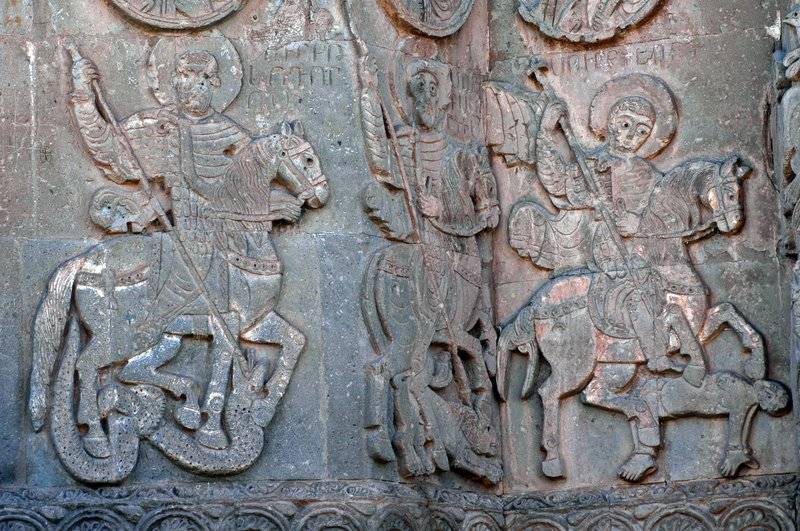
One step from great to negligible
However, for a number of reasons (one of which was a military defeat) in 1045, Armenia as an independent state ceased to exist and completely passed under the authority of Byzantium. The exodus of Armenians began, the masses leaving the land, who came under the authority of the Byzantines. Armenians managed to preserve the remnants of their national-state structure only in some places: Syunik (Zangezur), Tashir and Nagorno-Karabakh. In 1080, in Cilicia, Armenians also formed their own independent principality, which in 1198, under Levon II, became a kingdom. It is also quite obvious that it was Armenian Christians who were culturally dominant in their region for many centuries, despite the presence of a significant Islamic population present in many Armenian cities.
Happy country rich in iron
British researcher D. Nicole believes that the traditional military culture of Armenia was similar to the military culture of western Iran and to a lesser extent the culture of Byzantium and the Arab lands. The military elite was a rider in heavy armor. Moreover, it was relatively numerous due to the fact that Armenia was rich in iron. Large shields, spears and swords were favored. weapons such riders even at the end of the XI century, when single-edged saber was used as a weapon. Mounted archery was also known, but was not used as such by Central Asian nomads at the beginning of the attack and during the pursuit. Riders lined up and fired at the enemy in volleys. In addition, Armenians were considered qualified siege engineers.
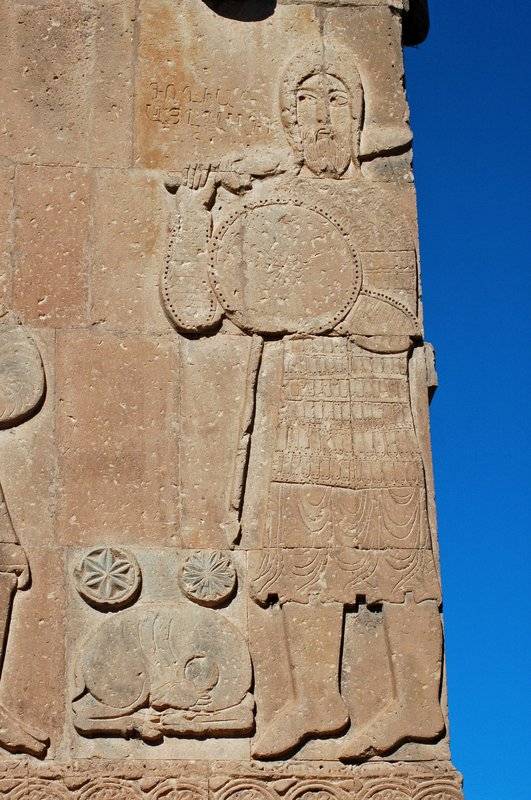
To the West, to Edessa and Antioch!
Before the defeat of Manzikert in 1071, the mass emigration of Armenians was directed to the west, to Cappadocia. Since the 1050-ies, the Armenians who remained in the East have tried, as far as possible, to defend themselves, but after Manzikert every local feudal lord had no choice but to defend both his own territory and his people. The breakthrough of the Turkmen nomads to the central Anatolian plateau led to the second Armenian migration, this time south from Cappadocia to the Taurus Mountains. New cultural centers of Armenians appeared. Among them, the most important were Edessa (Urfa) and Antioch (Antakya), which were controlled by Filaret Varazhnuni, an Armenian military leader who once controlled most of the Byzantine border in southeastern Anatolia. Without succumbing to the Byzantines and Turks, Filaret entered into an alliance with various neighboring Arab princes. By this time, the Armenian "army" included infantry and cavalry, as well as a large number of Western European mercenaries - mainly Normans, who had previously served Byzantium. However, even with such troops, Filaret was still defeated by the Seljuk Turks. But they did not smash all the Armenian principalities in a row, and those whose rulers were less ambitious and obstinate, allowed them to retain power, land, and subjects, probably, to use them as pawns in a more serious struggle with the Arab Emirs of the Euphrates and the North Syria. Urfa was one of those highly militarized city-states, which, with its permanent garrison and city militia, existed until the First Crusade. Others, such as Antakya, were directly subordinate to the Seljuk government, and by the time the Crusaders appeared, the local military elite was largely Turkic.
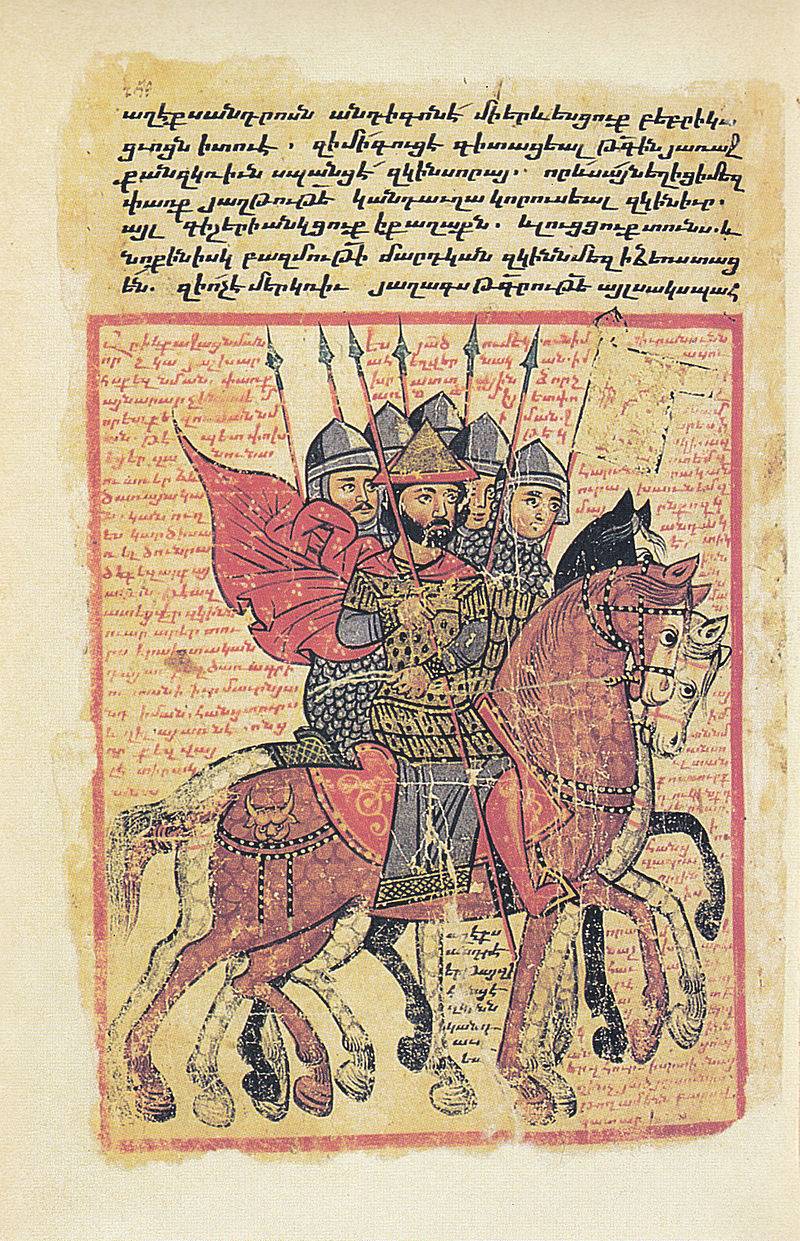
State in the ring of enemies
Small Armenia in Cilicia existed for quite a long time, although it was surrounded by enemies from almost all sides and even from the sea. His strength, if not wealth, lay in the Taurus mountains to the north. The whole region was the border between Byzantium and the Islamic world for many centuries and is full of castles and fortresses, although it fell under the control of Armenia by the beginning of the 1080-s, when most of the local Greek population was driven out of here. And let all this time in the state there was a fierce struggle for power, during which the rivals swore allegiance and betrayed each other, then submitting to Byzantium, then fighting with it, until this last outpost of Christianity, the state of Lesser Armenia, existed here long enough what did not finally fall under the blows of the Egyptian Mamluks in 1375 year.
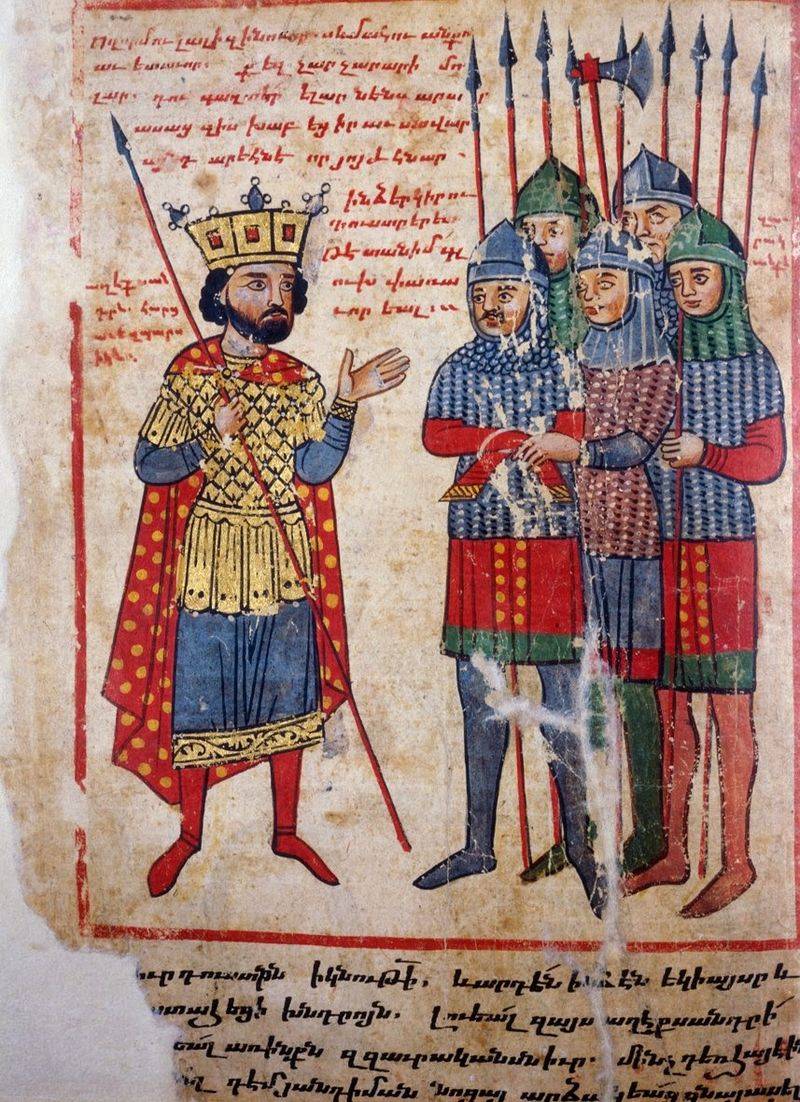
Army on salary!
However, despite all the internal feuds, from the second half of the 13th century, the rulers of Cilicia Armenia had a regular army, from 12 thousands of horsemen and 50 thousands of infantrymen. In peacetime, this royal army was stationed in different cities and fortresses of the country. A special tax was levied on the population for the maintenance of the army, and soldiers for service received a salary. During the year of service, the rider received 12, and the infantryman received 3 gold coins. The nobles were given a "hrog" —that is a kind of "feeding" from the population, which was assigned to it. And, of course, the soldiers relied part of the production.
Simple and clear system
At the head of the army of Cilicia Armenia was the king himself. But he had a commander-in-chief, called sparapet, similar to the European constable. Sparapet had two assistants: Marajakht (Armenian marshal), who performed the function of chief quartermaster, and the Spasvalar, the head of the cavalry.
As in Europe, the army of Cilicia Armenia was formed on the basis of a flax system. All large and small landowners and dziavory knights were obliged to serve the king. The unauthorized departure of a vassal from the army or his refusal to fulfill the king’s demands were considered treason with all the ensuing consequences. But then the service was followed by a reward in the form of a land award. Either the soldiers just paid salaries, which was also not bad. He can buy land for this money later.
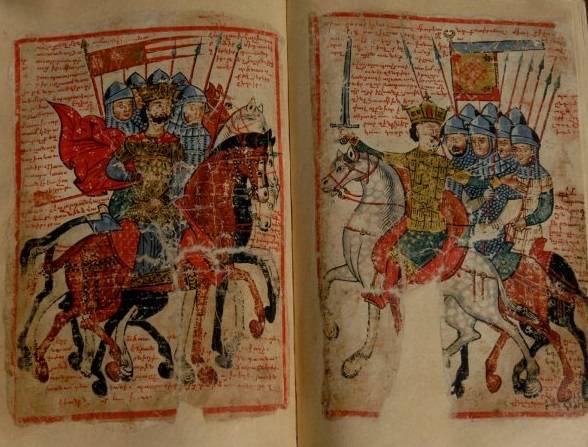
And here we see the "continuation of the same topic." But on separate warriors chainmail, while some have armor made of plates.
Armenian chivalry - dzavori
Armenian dzhiavor were the most real knights. There is an opinion that there was no Armenian knightly orders in Cilicia, since there was a regular army there. Nevertheless, the institution of chivalry existed there. Initiation into knights was carried out according to strictly enforceable rules and was timed to any worthy event, for example, a coronation or a major victory over the enemy. “Instructions on chivalry” (the original document has been preserved!) Reached us, where it is written that people from among the feudal lords are dedicated to knighthood, from 14 years. Dziavor wore blue clothes that showed a cross in the color of gold and a horseman that signified his ministry. In this case, the knighthood was of two ranks - the highest and the lowest. Well, and who got into what rank, depended primarily on ... the volume of land holding.
Infantrymen- "ramiki"
During the war, both citizens and peasants were recruited into the army, of whom the Ramic infantry (Armenian "common people") was recruited. With full mobilization, it was possible to collect (according to the sources that have reached us) an army in 80 — 100 thousands of people. In addition to the cavalry, there were detachments of archers, as well as personnel of servicemen, servants and military doctors. Young warriors who did not belong to the nobility, after the call were military training.
Engaged to the sea!
At sea, Armenia continuously competed with Genoa and Venice for dominance in the Mediterranean, and often fought with them. These wars often occurred in the territorial waters of Cilician Armenia and off its coast. Numerous both Armenian and foreign testimonies of eyewitness chroniclers of those events (Sanuto, Dandolo, Genoese anonym, Hetum and others) have come down to us, so today we know quite a bit about all the ups and downs of these wars. The ships were built in Armenian shipyards, the sailors were Armenians too, and the Armenian merchants were brave seafarers who were not inferior to the Genoese and Venetians!
Mercenaries in demand
It is also interesting that the bulk of the mercenary troops came to the many regions of the Middle East with the territory of compact residence of Armenians. Most of those who served in the Crusader states probably came from Cilicia, the regions of Taurus or Lesser Armenia, and Armenian mercenaries fought both in cavalry and infantry. Armenians have long played a prominent role in the Byzantine army. For example, approximately 50 000 Armenian militias were supposed to be disbanded by the Byzantine authorities only in 1044 year, but other Armenian troops, especially from the vassal princes of western Cilicia, were still in the service of the Byzantine emperors and more than a century later.
But Armenians were just as noticeable in the armies of the enemies of Byzantium. For example, Armenians served in the Selcuk-Roma troops (Turkish Anatolia), first as allies against the Byzantines during the first phase of the Seljuks invasion, and then submitting to the new conquerors. In fact, a significant part of the Armenian nobility has never fled from its original Eastern Anatolian homeland, and subsequently, albeit slowly, was absorbed by the Seljuq military elite. And the Armenians fought side by side with the Seljuks and against the Mongols, and against the Mamluks, who fought with the same Mongols! Such are the paradoxes stories...
In the same Syria, the Armenians served as archers in the armies of Sultan Nur ad-Din and his heirs. It is also interesting that the squad of Armenian cavalry, who was in Damascus in 1138, belonged to a heretical sect known as Arevorik, who allegedly believed that Christ was ... the sun. That is, even sectarians and those at that time had their own military detachments, and were not at all merely left fanatics who had left the world and dressed in rags. However, the main role of the Armenians in the Muslim world happened to play in later Fatimid Egypt, where at times they actually ruled this country.
Medieval chroniclers report ...
How big was the size of the Armenian army? Thus, according to the historian Tovma Artsruni, who lived at the turn of the 9th-10th centuries, Smbat I had under his command ... an 100-thousandth army. Reporting on the festivities held in the capital of Ani on the occasion of the ascension to the throne of Gagik I, Mateos Urhaezi reported: “On that day he conducted a review of his troops, consisting of 100, thousands of elected men, who were well-equipped, famous in battle and extremely brave. " In 974, King Ashot III gathered against the army of John Tzimiskes 80-thousand army, which included mercenaries. The army consisted of two main divisions - marzpetakan and arkunakan. The first was collected throughout the country and was subordinated to the commander - marzpet or marzpan. Under Tsar Smbat I, the marzpan was one Gurgen Artsruni, under Gagik I - Ashot. Moreover, the number of cavalry was half the infantry, that is, approximately 1 / 3 of the number of the entire army. As in Europe, the feudal troops, who were part of the tsarist army, had their own lords, commanders and their own flags, and clothes of the same color. For example, it is reported that the soldiers of King Abbas (vassal Smbate II) wore red clothes.
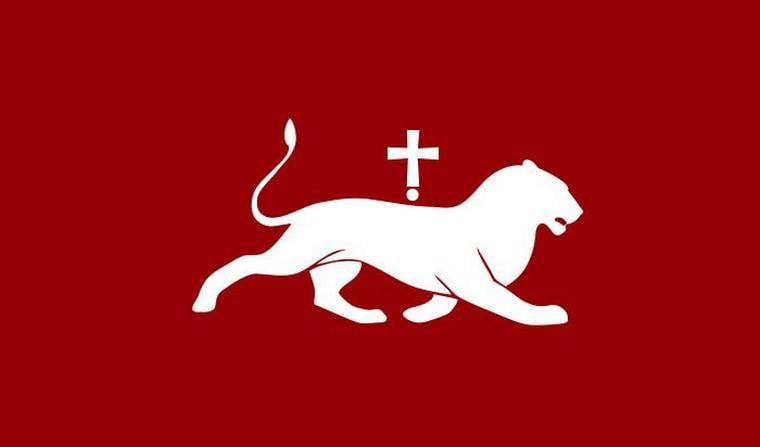
At the time of the weakening of the Armenian state, in 1040, the number of the Armenian army, according to contemporaries, numbered 30 thousands. However, it is emphasized that these are only those people who were recruited in the capital Ani and in its vicinity. How much these figures can be trusted today is another question.
Armenians are skillful builders!
It is also known that the Armenians were skillful builders and built powerful fortresses in very inaccessible places. As a result of this construction, the Armenian kingdom had a powerful defensive belt of fortresses: the fortresses of Syunik and Artsakh, and also the fortresses of Vaspurakan and Mocca defended it from the east and southeast, in the west there were the Armenia High fortresses and Tsopka. Near the capital Ani, to its west, the Kars fortress and Artagers, Tignis and Magasaberd were located to the west, and the fortresses of Garni, Bjni and Amberd defended approaches to it from the south and east.
Использованная литература:
1. Gorelik, M. Warriors of Eurasia: From the VIII century BC to the XVII century AD. L .: Montvert Publications, 1995.
2. Sukiasyan A.G. History of the Cilician Armenian State and Law (XI-XIV centuries) / resp. ed. Z. G. Bashindzhagyan. Yerevan: Mitk, 1969. C. 158-161.
3. Nicolle, D. Arms and Armor of the Crusading Era, 1050 - 1350. UK L .: Greenhill Books. Vol. 2.
To be continued ...
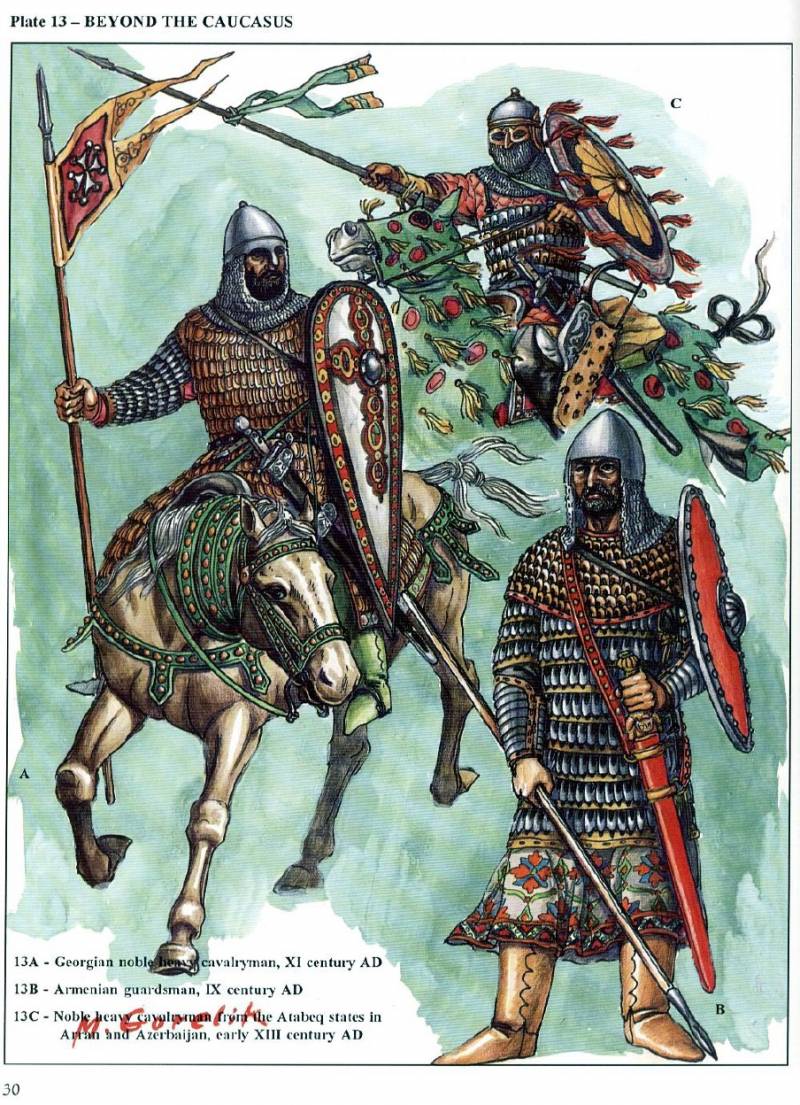
Information